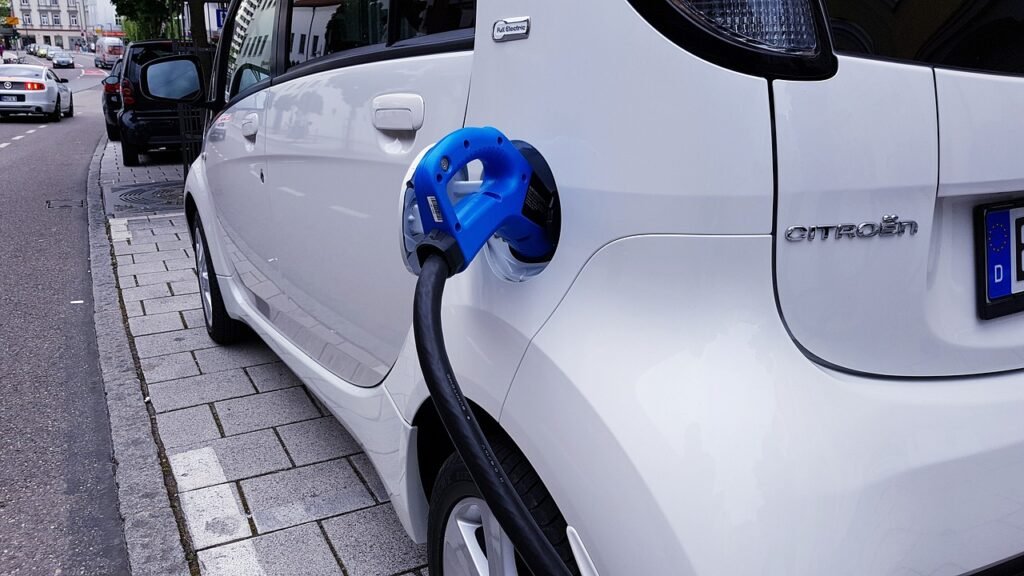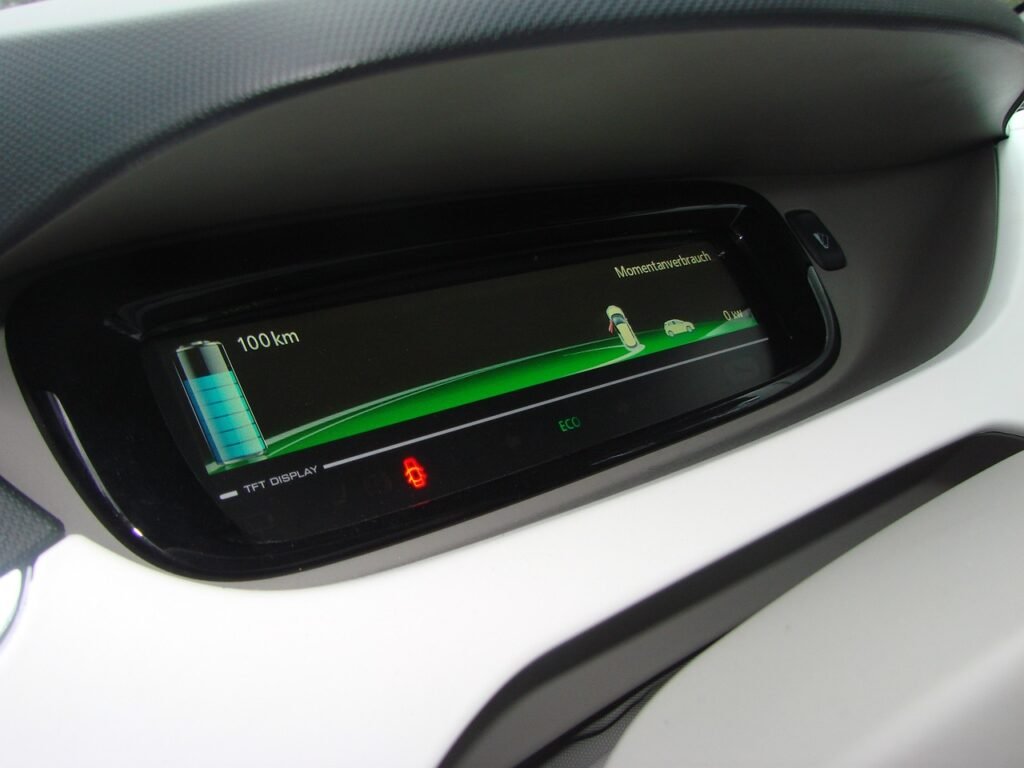Imagine you’re driving on a hot summer day, and the thought suddenly strikes you about electric cars and their ability to handle heat. It’s no secret that every vehicle gets tested by the sun’s wrath, but you might wonder if electric cars have a harder time staying cool given their different mechanics. Well, electric vehicles (EVs) are pretty much like smartphones on wheels, loaded with batteries and sophisticated tech. So, the question of whether they overheat is not only valid but quite intriguing. Let’s take a closer look into this topic and see how electric cars fare when the temperatures start to rise, ensuring your curiosity is as satisfied as your need to stay cool on those scorching days.
Understanding Electric Car Mechanics
When you dive into the world of electric vehicles (EVs), you’ll notice the engineering magic that makes them silently zip through the streets. Unlike their gasoline-guzzling counterparts, electric cars operate on a different set of mechanics which, at first glance, might seem like wizardry. But don’t worry, it’s quite straightforward once you break it down.
Components of an electric car
At the heart of every electric car is its battery pack. This is the powerhouse that stores electricity to be used by the electric motor. The electric motor, then, is what actually moves the car, converting electrical energy into mechanical energy. Simple, right? Additionally, there’s the inverter, which changes direct current (DC) from the battery to alternating current (AC) for the motor. And don’t forget the onboard charger that converts AC from your home into DC for charging the battery.
How electric cars manage heat
One aspect of electric cars that often takes people by surprise is how they manage heat. Unlike internal combustion engines (ICEs) that can get extremely hot, electric cars run cooler. However, they still generate heat, especially the battery pack and electric motor. To keep everything at an optimal temperature, EVs use cooling systems, typically liquid-based, to dissipate heat effectively.
Comparing heat generation in electric vs. internal combustion engines
Comparing heat generation between electric cars and ICE vehicles highlights significant differences. ICE vehicles produce a lot of heat due to the burning of fuel. A large portion of the energy from the fuel in these vehicles is lost as heat, requiring complex cooling and exhaust systems to manage temperature. Electric cars, on the other hand, are more efficient with energy conversion, producing less heat. But, managing this heat is still crucial for performance and longevity, albeit typically easier and more energy-efficient.
Do Electric Cars Overheat?
You might wonder if electric cars, with their sleek designs and quiet operation, ever run into the age-old problem of overheating. Let’s delve into this.
Instances of electric cars overheating
Yes, electric cars can overheat. There have been instances where electric cars, especially under high stress or harsh environmental conditions, have experienced overheating, particularly the battery pack or motor. This can result in reduced performance or, in extreme cases, safety hazards.
How common is overheating in electric cars?
Compared to their ICE counterparts, electric cars are less prone to overheating thanks mainly to their more efficient energy use and sophisticated thermal management systems. However, like any technology, they’re not impervious to faults. Overheating in electric cars is relatively rare but not unheard of.
Factors that contribute to electric car overheating
Several factors can contribute to an electric car overheating. High ambient temperatures can pose a significant challenge, as can prolonged high-speed driving or repeated fast charging. Another factor could be the failure of the car’s cooling system to function correctly, due to either a mechanical issue or design flaw.

Battery Thermal Management Systems
Ensuring the electric car’s battery operates within its optimal temperature range is crucial for both performance and longevity. This is where the battery thermal management system comes into play.
The role of the thermal management system
The thermal management system’s job is to keep the battery’s temperature just right. Too cold and the battery won’t discharge efficiently, too hot, and you risk battery damage or reduced lifespan. The system achieves this through heating or cooling the battery as necessary.
Different types of battery cooling systems
Battery cooling systems in electric cars vary, ranging from air-cooled systems to more complex liquid-cooled systems. Air-cooled systems are simpler and cheaper but less effective at removing excess heat. Liquid-cooled systems, while more complex and costly, offer superior cooling efficiency.
Improvements in battery thermal management
Over time, improvements in battery thermal management have greatly enhanced electric car performance and safety. Innovations in liquid cooling designs, as well as the integration of heat pumps, have led to more efficient thermal regulation, ensuring batteries can handle more rigorous demands without overheating.
Technology and Innovations
The march of technology continuously pushes the boundaries of what’s possible in electric cars, particularly in managing and mitigating heat.
Advanced cooling systems in modern electric vehicles
Modern electric vehicles sport advanced cooling systems that intricately manage the temperature of batteries, motors, and electronic systems. These can include state-of-the-art liquid cooling loops and even phase-change materials that absorb heat effectively.
Software solutions for thermal management
It’s not all hardware, though. Software plays a pivotal role in thermal management, with sophisticated algorithms monitoring temperatures in real-time and adjusting cooling strategies on the fly for optimal performance and safety.
Future technologies in electric vehicle cooling
Looking ahead, we can anticipate further innovative solutions in electric vehicle cooling, such as solid-state batteries with inherently safer thermal properties and even more efficient cooling technologies that minimize energy use and optimize performance.

Impact of Environment on Electric Car Temperature
The environment around us impacts how electric cars manage their temperature, presenting a set of unique challenges.
Effects of extreme temperatures
Extreme temperatures, both high and low, can significantly affect electric car operation. High temperatures can strain the cooling systems, while low temperatures can reduce battery efficiency and range. Understanding and mitigating these effects is crucial for reliable EV operation.
Driving conditions and overheating
Certain driving conditions, such as prolonged high-speed travel or towing, can increase the risk of overheating in electric cars. These activities demand more from the battery and motor, generating additional heat that must be managed.
Seasonal challenges for electric car thermal management
Seasonal changes bring unique challenges for electric car thermal management. Summer heat demands efficient cooling, while winter cold requires effective battery heating. Modern EVs are equipped to handle these seasonal variations, ensuring year-round performance and reliability.
Case Studies of Overheating Electric Cars
Real-world scenarios where electric cars have overheated provide valuable lessons and insights into how this issue is handled.
Real-world incidents of electric car overheating
There have been documented instances where electric cars have overheated, leading to reduced performance or, rarely, safety incidents. These cases often highlight the importance of robust thermal management systems.
Analyses of overheating causes
Analyses of these overheating events typically reveal specific causes, such as battery manufacturing defects, insufficient cooling systems, or external factors like extreme environmental conditions. Understanding these causes is essential for preventing future issues.
Solutions implemented to address overheating issues
In response to overheating incidents, manufacturers often implement solutions ranging from recalls and hardware fixes to software updates that improve thermal management strategies, showcasing the industry’s commitment to safety and reliability.

Preventing Overheating in Electric Cars
Preventing overheating in electric cars is a multifaceted effort, involving best practices by drivers, proper vehicle maintenance, and advancements in technology.
Best practices for drivers
Drivers can help prevent overheating by avoiding excessive high-speed driving, minimizing rapid charging, particularly in hot weather, and parking in shaded areas to reduce thermal load on the battery.
Vehicle maintenance tips
Regular maintenance, such as checking cooling systems for leaks or blockages and ensuring software is up to date, can help prevent overheating. Paying attention to your car’s performance can also catch potential issues early.
Technology’s role in preventing overheating
Beyond individual actions, ongoing technological advancements continue to improve electric cars’ ability to manage and prevent overheating. This includes innovations in battery chemistry, cooling systems, and thermal management algorithms.
The Future of Electric Cars and Overheating
Looking towards the future, ongoing research and development promise to further mitigate overheating concerns in electric cars.
Current research on electric car thermal management
Research currently underway aims to enhance electric car thermal management through more efficient cooling technologies, improved battery designs, and advanced software algorithms for real-time temperature regulation.
Potential future improvements
Future improvements could include breakthroughs in battery technology that inherently resist overheating, such as solid-state batteries, and even more sophisticated cooling systems that can adaptively respond to varying conditions.
The importance of solving the overheating issue for electric car sustainability
Solving the overheating issue is crucial for the sustainability of electric cars. Efficient thermal management not only ensures the safety and reliability of electric cars but also maximizes battery life and performance, essential factors for promoting widespread adoption.

Consumer Guide: Choosing the Right Electric Car
When selecting an electric car, considering its thermal management system is a savvy move.
How to evaluate thermal management systems
Look for information on the vehicle’s cooling system — is it air or liquid-cooled? Check reviews and consumer reports for any overheating issues. Manufacturer specifications and third-party tests can also provide insights into how the car manages heat under various conditions.
Important features to consider
Scan for features like battery cooling and heating capabilities, software management for thermal regulation, and user controls for preconditioning the car in extreme temperatures. These features can significantly influence your electric car experience.
Brands known for efficient thermal management
Certain brands have garnered reputations for their efficient and reliable thermal management systems. Doing a bit of homework on brands known for this can lead to a better-informed decision when purchasing an electric car.
Safety Measures and Overheating
Safety is paramount, and understanding the safety measures in place for preventing and dealing with overheating in electric cars can provide peace of mind.
Safety features in electric vehicles to prevent overheating
Modern electric cars come equipped with multiple safety features to prevent overheating, such as temperature sensors throughout the battery system, automatic cooling system activation, and, in extreme cases, power reduction to prevent damage.
Emergency protocols for dealing with electric car overheating
In the rare event that an electric car begins to overheat, built-in emergency protocols can kick in, including alerting the driver, safely shutting down the affected systems, and, if necessary, engaging emergency services.
The role of automatic software updates in enhancing safety
One of the more futuristic aspects of electric cars is their ability to receive software updates that can improve safety features, including thermal management. These updates can enhance how the car handles potential overheating risks, making them an essential aspect of electric car safety.

